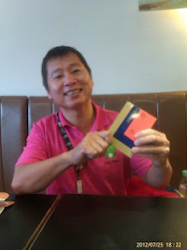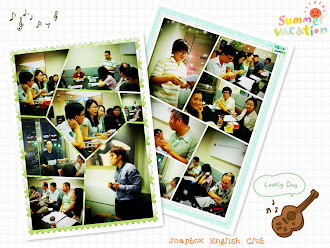陽光甜味咖啡館 Sun Sweet Cafe
We meet right here every Tuesday, Friday and Saturday evening.
Dare to dream!
勇敢夢!
LOVE YOURSELF!
愛自己!
歡迎您加入 英文/知識/交友 文章請點選欄位
周六(9/2)1.偏見新聞 2.郵輪旅遊 下午 4:00-6:00
晚上9:30
No comments
板橋區文化路一段421巷11弄1號 (陽光甜味咖啡館)
新埔捷運站1號出口 旁邊7-11巷子進入20公尺 看到夏朵美髮
左轉 聚會時間: PM 4:00-6:00
偏見新聞
Ways to Recognize Bias in a Newspaper Article wikihow
Ask yourself if the article helps or hurts anyone.
Look at the words used to describe the people, political issues, and events mentioned in the article. If the language makes them sound good or bad, rather than just neutral, the reporter may be trying to influence you to favor one side over another.
After you’re finished reading, take a minute to think about how you feel about the issue the article covered. Do you suddenly want to support a particular politician or fall on one side of political debate? If so, you’ll need to think about whether the article convinced you with facts or slanted language.
Figure out who’s reading the article.
Think about who typically reads this kind of article. Reporters might want to write stories that their readers will appreciate, which could lead to biased reporting. Try running a Google search to look for descriptions of the typical age, gender, racial background, income, and political leanings for the audiences of several newspapers and media outlets.
Enter something like “demographics of New York Times readers” into the Google search bar. You may find information that’s a few years out of date, but your search should still give you a broad idea of who reads the paper.
Understanding newspapers’ usual demographics can help you think about what various groups of people care about. Younger readers might have strong feelings about education, since they’re still students. Older readers might want content about taxes and retirement.
Look for exaggerated or colorful language.
Consider whether the words the reporter uses in the article are informational or emotional. Watch out any time that a word or description makes you feel a strong emotion. If overly descriptive words are used to represent a particular group of people or side of a debate, this could be an especially big red flag.[5]
For example, an informational description of a politician could look like this: “Senator Smith is originally from Connecticut and is thirty years old.” Check out how this description makes the same content emotional: “Senator Smith comes from a rich town in Connecticut and is just barely out of her twenties.”
Look for words that reveal the reporter’s double standards. For example, one person might be described as "passionate and inspired" while another might be described as "stubborn and rash," even if both people are showing dedication to a particular cause.
Check out the images to look for bias.
Photographs, cartoons, and other images tell stories just like words. Look for the main subject in the image and think about how this person or thing looks. Take note of any shadows or colors that make the subject appear scary or triumphant. Consider how the picture makes you feel, especially if you’re suddenly feeling sympathetic toward a particular group of people or side of a political debate.
Q:
How to recognize bias in a newspaper article?
How do you tell when the news is biased?
What do you think the Taiwanese news outlet?
How to tell fake news from real news?
How not to hurt anyone?
How to prevent political debate when friends get together?
How social media affects us?
郵輪旅遊
Reasons Why Cruising is Real Travel By Brittany Chrusciel
Whether you're gliding from country to country on a mega-ship, sailing yacht or riverboat, you'll find plenty of opportunities to immerse yourself in unique cultures. Shore excursions can bring you into the home of a local family in Bratislava, to the fields of the Dominican Republic with a farming tool in hand or onto the beaches of the Galapagos while clutching your camera as your nature guide explains the courtship rituals of waved albatrosses.
Oceanography Lessons
Believe it or not, cruising can incorporate education about the ocean below. Live the life aquatic on a Paul Gauguin ship (a line primarily operating in the South Pacific and carrying the namesake of the Impressionist artist best known for his depictions of Tahiti and its inhabitants). The descendants of famous marine biologist Jacques Cousteau have carried on his legacy, and his eldest son, Jean-Michel, is an environmentalist, filmmaker and educator who frequently hosts ocean conservation and education programs onboard the small-ship cruise line. Through the Ocean Futures Society, hear in-depth lectures on the ecosystems all around you before experiencing them firsthand with guided snorkeling, hikes in port and more. Other cruise lines, such as Carnival, weave marine trivia into life onboard through youth programming like Carnival's Camp Ocean. Princess Cruises' partnership with the Discovery channel, called Discovery at Sea, provides educational onboard activities for the whole family and even themed shore excursions related to Animal Planet, Shark Week, Deadliest Catch and more.
Seeing the World
A trip around the world is a lofty enough goal without factoring in the logistics of transportation, accommodations, dining arrangements and even laundry. World cruises are no thrifty feat, but they ply international waters with speed and efficiency and provide an onboard atmosphere you'll come to call home. Get to know your crewmembers, where they come from and a bit about their nationality while you circumnavigate continents, stepping foot in a new place every few days -- all while sleeping in the same bed each night. Overland tours, typically only available on long cruises, allow you to see inland places and rejoin your cruise at a later port. During longer stretches at sea, catch a show, try a wine tasting, get a spa treatment, or soak in the sun on deck with your favorite read; no time is "wasted" enduring a flight or long drive. Typical world cruise itineraries span three to four months and cover roughly 40 ports. Luckily, almost all world cruises offer segments with equally exotic ports. This option cuts sailing time to a manageable number of vacation days for anyone not enjoying the luxe retired life.
Q:
Have you ever took on a long cruise?
Did you try snorkeling or diving?
How often do you travel?
How to see the world?
What are the unique cultures you have ever heard?
How to experience something new?
Where are the best places to travel?
週四 (8/31)1.成功就是不浪費時間 2.100歲的人生戰略
上午8:06
No comments
板橋區文化路段421巷11弄1號 (陽光甜味咖啡館)
新埔捷運站1號出口 旁邊7-11巷子進入20公尺 看到夏朵美髮院 左轉 PM7:00--9:30



新埔捷運站1號出口 旁邊7-11巷子進入20公尺 看到夏朵美髮院 左轉 PM7:00--9:30
成功就是不浪費時間
8 Things Successful People Never Waste Time Doing Cynthia Bazin
1. Productive, successful people don’t get sucked into social media.
Being on social media—checking notifications Facebook, scrolling through pictures on Instagram, reading quick updates on Twitter, whatever—it’s part of everyday life. But if you don’t control how much time you spend on it, the hours will fly by and you won’t have accomplished anything on your to-do list.
So either put a time limit on it—set an alarm for when you need to minimize it, close the app, do something else—or only get on after completing necessary work projects. Use social media as a reward.
2. Productive, successful people don’t go through the day without a plan.
Successful people have a purpose, a laser-focused plan of things they want to achieve on a particular day. I believe in writing things down—but only the top two or three priorities I need to accomplish that day, not a long list of things.
Write down your top priorities and break down those large tasks into more reasonable steps and you’ll see yourself wanting to get them done and crossed off the list.
3. Productive, successful people don’t do emotionally draining activities.
If you want to step into a truly successful life, you have to focus on things that positively fuel your life. Productive people don’t waste their time on things that emotionally drain them.
Before committing to activities on your schedule, be sure the activity will positively add to your life. If you believe it won’t, then think about saying no to it. Also, don’t feel obligated to give an answer right at the time you’re being asked to do something. Think before you say yes and know that it’s OK to say no to requests for your time.
4. Productive, successful people don’t worry about things they can’t control.
Successful people realize that worrying gets you absolutely nowhere in life, especially if you can’t do anything about a situation.
So turn your thoughts to action-based activities. Focus on things you can get done.
5. Productive, successful people don’t hang out with negative people.
It’s said that you are the average of the five people you spend the most time with. So if you want to be your best, you have to surround yourself with the best people.
Be sure to eliminate negative, toxic energy around you. If you want to soar in life, you need to unload what is weighing you down.
6. Productive, successful people don’t dwell on past mistakes.
Successful people make mistakes. Everyone makes mistakes. The key to being successful in life is not making the same mistake twice, learning and growing from mistakes, and becoming a better person because of them.
Do you waste time doing? How to save time?
Do you get sucked into social media?
What are the disadvantage of being on social media?
Do you accomplish anything on your to-do list?
How not let emotional things drain you?
How to deal with negative people?
How to avoid making the same mistake twice?
100歲的人生戰略
What happens if we all live to 100? CNN Andrew Scott
Many more people are living longer and will continue to do so. Today, around 72,000 people over 100 years of age live in the United States, but if current trends continue, that number will reach approximately 1 million by 2050.
Over the last two hundred years, life expectancy has increased by two or three years every decade. Given these trends, it's possible
that more than 50 percent of children born today in the United States have a realistic expectation of living beyond 100. Even those in their 40s and 50s know they are living longer than their parents and therefore will need to work beyond 65. The percentage of Americans age 65 and older who are at work has increased continually since 1983, rising from 10 to nearly 19 percent. Meanwhile, a new study
shows that the funding of public worker pension plans in the United States remained unchanged in 2015.
White women's life expectancy shrinks a bit
People are living longer, but the amount and the way we pay for their pensions is staying the same. This growing longevity means many people probably haven't saved enough for retirement. In response they are working longer, but are also searching for better investment returns. In a period of historically low interest rates, management charges become all the more noticeable and have the potential to wipe out already meager rates of return. A fiduciary rule to ensure the choice of a product is based on the needs of the investor and not the size of the management fee paid to advisers becomes more important when returns are so low.
Another factor prompting the need for a fiduciary rule is the growing complexity of pensions and the increased need for customization. When life expectancy was 70 years, we created a three-stage life of education, work and retirement. However, as Lynda Gratton and I suggested in our recent book, this three-stage life cannot be stretched over 90 or 100 years. A 100-year life requires a 50-or 60-year career in order to finance a pension; that length of career is unsustainable.
The result will be a multi-stage life with transitions between different career stages. Different individuals will make different choices at different times about when they want to retire, when they focus on making money versus a better work-life balance. Some individuals age 70 will still be working -- some won't. Some will be interested in mortgages and risky investments -- others will be interested in safe investments and income. This diversity will require much more complicated financial advice and less standardization. When everyone has the same needs, then the same product can be used. With greater diversity and needs among investors comes the need for greater customization and rising importance of a fiduciary rule with customers at the heart of the process.
Women live longer, but not as well as men, in their golden years, study finds
Further, if professionals cannot recoup fees from products they sell, but charge for professional advice, then it's likely only the higher income individuals will pay for this. Others will find themselves without advice and faced with simple standardized products. Less life expectancy, less money and less advice -- it's not an attractive prospect.
Q:
What happens if we all live to 100?
Why we live longer these days, and why you should worry?
How long do you really want to live?
Why do women live longer than men?
What are the types of discrimination elderly people experienced?
How would extended longevity affect society?
長壽成一種恐懼 八成台灣人害怕活到100歲
你想活到幾歲?國內一項最新調查發現,台灣人近半數希望活到80歲就夠了,而高達八成不想當百歲人瑞。出乎意外的是,與18年前類似的調查比較,國人對「長壽」這件事愈來愈悲觀。
這項今天(26日)發表的「中年世代活到100+歲態度大調查」,由《康健雜誌》委託政治大學統計學系民意與市場調查研究中心執行,於今年3月間,針對22縣市、40~64歲之民眾隨機抽樣,有效問卷1,086份。
調查顯示,84.4%受訪者不想活到100歲,希望活到100歲的人僅15.7%。而與《康健》1999年發表的「健康長壽大調查」相較,當時受訪者多期望活到70歲左右,但不想活到100歲為67.4%,18年後,台灣人對「長壽」更加懼怕。
不想當人瑞 怕健康差和沒錢
最新調查中,不想活到百歲的原因,84.4%是擔心「健康狀況不佳」、34.6%則是「金錢負擔」、18.6%則是「失去親友」。
至於表示願意挑戰當百歲人瑞者的受訪者,則是以「有生活目標」為最大的動力。其中,以「可以多陪家人」為最多,佔59.1%;其次是想遊山玩水43.3%;未完成的夢想28.4%;另有16%的人希望持續貢獻自己。
有趣的是,18年前33%的受訪者表示「沒想過自己會活多久」,但現在只有10.8%的人沒概念,反映近年來老化議題的傳播與教育還是影響了民眾的注意度。
至於,如果真的活到100歲,希望工作到幾歲? 六成民眾仍希望工作到65歲就休息 ,僅有31.5%的民眾希望工作到65歲以上。
收入愈差 被迫工作到愈老
進一步交叉分析後發現,收入高低會影響工作時間的意願。個人收入2萬元以下的人當中,四成願意工作到65歲以上,高於其他收入階層的人。凸顯高齡社會下,活得愈久也愈需要錢的支應,工作收入較低的人被迫要持續工作。
國家衛生研究院論壇諮議委員、台灣大學社會工作學系教授古允文預測,集體長壽年代裡,工作意願呈現兩極化,收入低者被迫要工作愈久,收入高者則視工作為志業,想要繼續承擔責任,從台灣很多企業領導人雖高齡卻仍在孜孜不倦就可見。
根據衛福部統計,國人一生長期照護需求時間平均約7.3年,其中男性6.4年,女性8.2年。失能、長照已經是每個家庭要正視的問題。但根據本次調查結果發現, 31.2%的民眾卻認為,自己老後失能時間只有1年以下,與現實落差相當大。
國家衛生研究院論壇諮議委員、台灣大學社會工作學系教授古允文認為,調查背後 凸顯民眾對失能時間過於樂觀,甚至沒有正視問題 。前衛生署(現改制衛福部)署長、台灣高齡化政策暨產業發展協會理事長楊志良指出,台灣平均餘命不斷增加,現已有六成人口可以活到80歲以上,這之中有25%的人可活到90歲。 如何面對長壽人生是必然要思考的問題,而不是對未來沒有打算。
週二(8/29)1.鬼門開 好兄弟來了 2.屬於每個人的情人節
下午6:00
No comments
板橋區文化路段421巷11弄1號 (陽光甜味咖啡館)
新埔捷運站1號出口 旁邊7-11巷子進入20公尺 看到夏朵美髮院 左轉 PM7:00--9:30
(中文讀書會 開張 週三(9/3) 中文讀書會 分享新知識)


新埔捷運站1號出口 旁邊7-11巷子進入20公尺 看到夏朵美髮院 左轉 PM7:00--9:30
(中文讀書會 開張 週三(9/3) 中文讀書會 分享新知識)
鬼門開 好兄弟來了
Chinese Ghost Festival Revealed! taiwanese-secrets
When is the Ghost Festival?
The Chinese Ghost Festival is a month long event which takes place every year, during the seventh month of the Chinese calendar (lunar calendar) which is around August in the western calendar.
What happens during Ghost Month?
Chinese Ghost Festival Customs
If you want to appease the ghosts and protect yourself from the bad ones who might want to hurt you, you can do like most Taiwanese people. On the first day of the Ghost Month, you should:
Go to a Chinese temple, burn some incense, and ask for protection.
Buy ghost money (joss paper) and burn it on the sidewalk in front of your house or store. Wait around 1 or 2 o'clock in the afternoon when the day is at its hottest. There is no limit to how big your fire can be, or how much smoke you can produce.
Set a table outside your house or store, right on the sidewalk or on the street, and put some food on it. Chicken, fish, veggies, rice wine, beer, bags of salt, sugar, MSG, are very common offerings. You can and should eat the food for dinner.
At the end of the Ghost Month, it's pretty much the same thing - people pray, burn some stuff, offer food and drinks on tables just before the gates of hell close, to make sure all the ghosts are happy, well-fed and prosperous... until next year.
13 things you don't want to do during the Ghost Month:
Avoid going out after midnight.
Don't go camping.
Don't swim in lakes, rivers, or in the ocean.
Postpone moving into a new house or apartment.
Don't buy a car.
Don't whistle - especially not at night!
Don't hang wet clothes at night. Dry ones are okay, though!
Don't open an umbrella in your house!?!
Don't buy puppets, sculptures, or dolls.
Don't say the word "ghost".
Don't pat someone on the shoulder.
If someone calls you, don't turn your head back only. You should turn your whole body around.
Avoid standing under trees or under bus stops at night.
Q:
What do you think about Chinese ghost festival?
Do you know any of Chinese ghost festival customs?
Do you believe in ghosts? If no, why?
How exactly do ghosts harm people?
What do you think that ghost money burning caused air pollution?
How to get rid of evil spirits?
Do you believe any of the superstition during the ghost month?
屬於每個人的情人節
Valentine’s Day is for Everyone From 蘋果日報雙語天
Just like there is more than one way to celebrate love, there is also more than one day to honor the occasion. Many countries have their own version of Valentine’s Day. In Asia for example, Chinese Lover’s Day falls on the seventh day of the seventh lunar month. It is sometimes called the Qixi Festival. The holiday is based on a romantic story about the annual meeting of a boy and a girl in Chinese mythology. Also in Asia, White Day is celebrated, although it is most popular in Japan. On March 14, men are expected to give women presents equaling three times the cost of the Valentine’s Day gifts they got a month earlier. Wherever you are in the world, don’t wait a single day to tell someone you need them in your life because love should be celebrated every day.
Valentine’s Day in China, Chinese Valentine’s Day Gift Ideas chinahighlights
What Gifts Should You Give Your Love in China?
Most of the gifts for Valentine’s Day are the same as in western countries, such as:
Gifts from gentlemen: flowers (traditionally red roses), chocolates, jewelry, a dress, a fashionable bag, underwear (not suitable for those who have just started dating), a comb, a necklace, etc.
Gifts from ladies: a watch, a tie, a shirt, a shaver, a wallet, a lighter, etc.
As a gentleman, if you choose a bouquet of yellow roses as the gift to your girl, you might need to a volume of explanation, because presenting yellow roses to someone you love generally symbolizes the declaration of breaking up.
No Umbrella and Shoes for Valentine’s Day Gifts
These items would be fine for married couples. But if you are just going out or engaged, you might need to pay some attention to the perceived meanings below. It could help you avoid bad omens, according to ever, you may choose to pay no attention to them, because many of the young people in China now ignore it.
An umbrella should not be a gift for your love. This is because the Chinese for “umbrella” is 伞 (san), which sounds the same as 散 ('breaking up').
Shoes should not be a gift for your love either. This is because presenting shoes implies “packing off your love”. However, if you have your love refund 1 yuan, the curse will be broken.
Q:
What do you think about the Chinese Valentine’s Day?
How to present a romantic gift?
How to express your love?
How to be romantic?
What are the reasons why couples break up?
Do you believe in superstitions? Why or why not?
What are the benefits of being single?
周六(9/2)1.偏見新聞 2.郵輪旅遊 下午 4:00-6:00
晚上9:30
No comments
板橋區文化路一段421巷11弄1號 (陽光甜味咖啡館)
新埔捷運站1號出口 旁邊7-11巷子進入20公尺 看到夏朵美髮
左轉 聚會時間: PM 4:00-6:00
偏見新聞
Ways to Recognize Bias in a Newspaper
Article wikihow
Ask yourself if the article helps or hurts anyone.
Look at the words used to describe the people, political issues, and
events mentioned in the article. If the language makes them sound good or bad,
rather than just neutral, the reporter may be trying to influence you to favor
one side over another.
After you’re finished reading, take a minute to think about how you feel
about the issue the article covered. Do you suddenly want to support a
particular politician or fall on one side of political debate? If so, you’ll
need to think about whether the article convinced you with facts or slanted
language.
Figure out who’s reading the article.
Think about who typically reads this kind of article. Reporters might
want to write stories that their readers will appreciate, which could lead to
biased reporting. Try running a Google search to look for descriptions of the
typical age, gender, racial background, income, and political leanings for the
audiences of several newspapers and media outlets.
Enter something like “demographics of New York Times readers” into the
Google search bar. You may find information that’s a few years out of date, but
your search should still give you a broad idea of who reads the paper.
Understanding newspapers’ usual demographics can help you think about
what various groups of people care about. Younger readers might have strong
feelings about education, since they’re still students. Older readers might
want content about taxes and retirement.
Look for exaggerated or colorful language.
Consider whether the words the reporter uses in the article are
informational or emotional. Watch out any time that a word or description makes
you feel a strong emotion. If overly descriptive words are used to represent a
particular group of people or side of a debate, this could be an especially big
red flag.[5]
For example, an informational description of a politician could look
like this: “Senator Smith is originally from Connecticut and is thirty years
old.” Check out how this description makes the same content emotional: “Senator
Smith comes from a rich town in Connecticut and is just barely out of her
twenties.”
Look for words that reveal the reporter’s double standards. For example,
one person might be described as "passionate and inspired" while
another might be described as "stubborn and rash," even if both
people are showing dedication to a particular cause.
Check out the images to look for bias.
Photographs, cartoons, and other images tell stories just like words.
Look for the main subject in the image and think about how this person or thing
looks. Take note of any shadows or colors that make the subject appear scary or
triumphant. Consider how the picture makes you feel, especially if you’re
suddenly feeling sympathetic toward a particular group of people or side of a
political debate.
Q:
How to recognize bias in a newspaper
article?
How do you tell when the news is biased?
What do you think the Taiwanese news
outlet?
How to tell fake news from real news?
How not to hurt anyone?
How to prevent political debate when
friends get together?
How social media affects us?
郵輪旅遊
Reasons Why Cruising is Real Travel By Brittany Chrusciel
Whether you're gliding from country to
country on a mega-ship, sailing yacht or riverboat, you'll find plenty of
opportunities to immerse yourself in unique cultures. Shore excursions can
bring you into the home of a local family in Bratislava, to the fields of the
Dominican Republic with a farming tool in hand or onto the beaches of the
Galapagos while clutching your camera as your nature guide explains the
courtship rituals of waved albatrosses.
Oceanography Lessons
Believe it or not, cruising can incorporate
education about the ocean below. Live the life aquatic on a Paul Gauguin ship
(a line primarily operating in the South Pacific and carrying the namesake of
the Impressionist artist best known for his depictions of Tahiti and its
inhabitants). The descendants of famous marine biologist Jacques Cousteau have
carried on his legacy, and his eldest son, Jean-Michel, is an environmentalist,
filmmaker and educator who frequently hosts ocean conservation and education
programs onboard the small-ship cruise line. Through the Ocean Futures Society,
hear in-depth lectures on the ecosystems all around you before experiencing
them firsthand with guided snorkeling, hikes in port and more. Other cruise
lines, such as Carnival, weave marine trivia into life onboard through youth
programming like Carnival's Camp Ocean. Princess Cruises' partnership with the
Discovery channel, called Discovery at Sea, provides educational onboard
activities for the whole family and even themed shore excursions related to
Animal Planet, Shark Week, Deadliest Catch and more.
Seeing the World
A trip around the world is a lofty enough
goal without factoring in the logistics of transportation, accommodations,
dining arrangements and even laundry. World cruises are no thrifty feat, but
they ply international waters with speed and efficiency and provide an onboard
atmosphere you'll come to call home. Get to know your crewmembers, where they
come from and a bit about their nationality while you circumnavigate
continents, stepping foot in a new place every few days -- all while sleeping
in the same bed each night. Overland tours, typically only available on long
cruises, allow you to see inland places and rejoin your cruise at a later port.
During longer stretches at sea, catch a show, try a wine tasting, get a spa
treatment, or soak in the sun on deck with your favorite read; no time is
"wasted" enduring a flight or long drive. Typical world cruise
itineraries span three to four months and cover roughly 40 ports. Luckily,
almost all world cruises offer segments with equally exotic ports. This option
cuts sailing time to a manageable number of vacation days for anyone not
enjoying the luxe retired life.
Q:
Have you ever took on a long cruise?
Did you try snorkeling or diving?
How often do you travel?
How to see the world?
What are the unique cultures you have ever
heard?
How to experience something new?
Where are the best places to travel?
訂閱:
文章 (Atom)


















